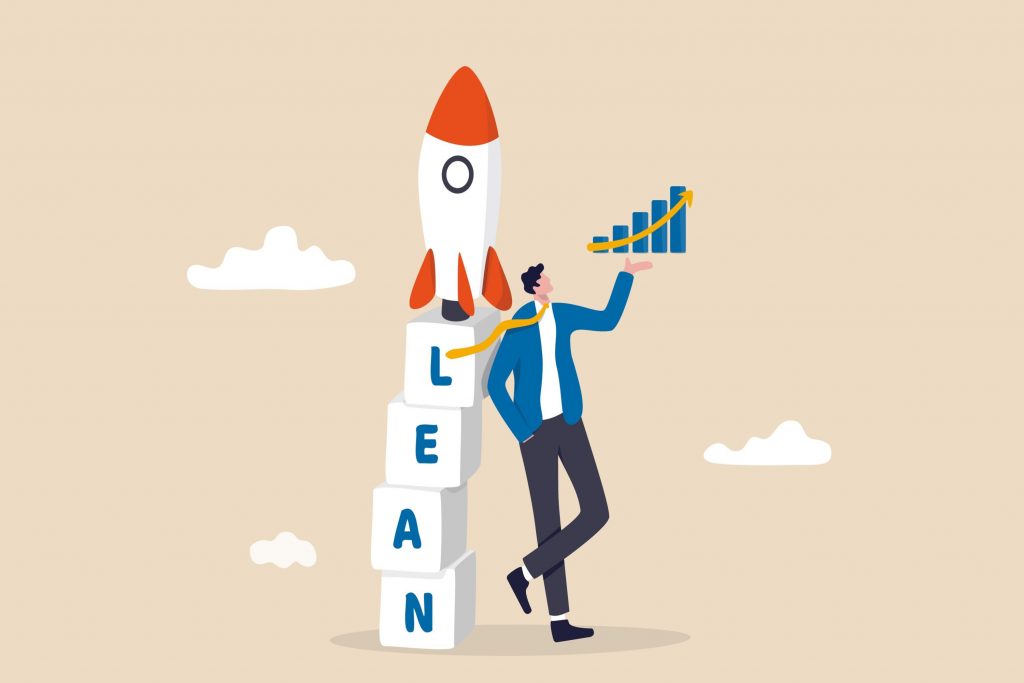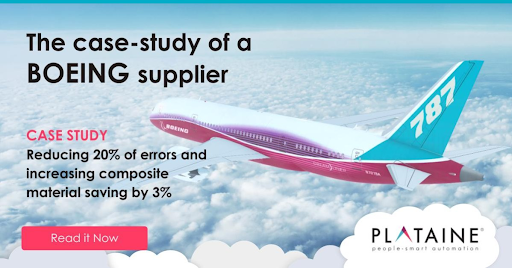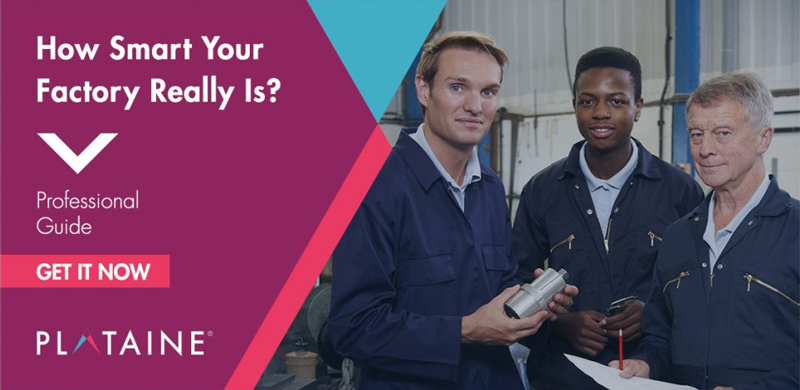Improving efficiency has always been a key goal for factory managers. These days it is more crucial than ever for three reasons: first, manufacturing has become more complex, the standards are high, and customers are demanding ever tighter manufacturing tolerances. Second, the ‘new normal’ has seen costs go up across the board due to the supply chain challenges that continue to ripple across the global manufacturing economy. In particular, raw material prices and freight shipping costs are up, and there is a global labor shortage that shows no sign of abating. The result of all this is that anything that can cut costs through improved efficiency is in demand. Third, Manufacturing automation and digitization is going mainstream. This has moved the dial on efficiency. Any factory that is not currently using AI based hyper automation, and industrial internet of things (IIoT) technology is at a competitive disadvantage. Lean manufacturing techniques – updated for the digital age – are more relevant than ever.
Lean manufacturing may not be new, but it’s still relevant
Lean manufacturing is nothing new. As an approach, it was initially based on the Toyota Production System, and it came to the West in the 1990s amid a flurry of interest from business academics in lessons that could be learned from Japan. Lean has two goals: to minimize waste, and to maximize productivity. These goals are achieved through the application of five principles:
- Identifying value to the customer
- Achieving full visibility of the value stream
- Improving process flow
- Switching to a pull system where work is only done when there is demand
- Continuous process improvement
Digitalization is an extension of Lean
Lean manufacturing is as relevant today as it ever was, but it is evolving. Meanwhile, digitalization is one of the most talked about trends in modern manufacturing, but in its goals – minimizing waste and maximizing productivity – it could be said to be an extension of Lean. In fact, at Plataine, we think that digitalizing your production line is only likely to be successful if all production line operators and managers think in terms of the Lean goals of waste minimization and productivity maximization.
The implementation challenge
Before considering deploying a digital manufacturing solution, it’s vital to plan in advance. While the best solutions can be deployed with zero downtime, the process will still incur a significant cost both financially and in terms of training staff to use the new system. To lay the groundwork, you need to accurately calculate the ROI of your investment, and ensure that all stakeholders have bought into the concept. With full internal buy-in, the financial benefits are significant.
So how does it help my bottom line?
The crucial ingredients that digitalization brings to a production line are AI-based analytical capabilities, and total connectivity. AI software and IIoT connectivity combine together to take the fifth Lean principle mentioned above – continuous process improvement – and turbo-charge it. That’s because AI never sleeps, so it never stops analyzing the massive amounts of data that IIoT sensors gather. Without AI, this data would be too vast to use, but with AI applied, production managers can use it for a huge range of improvements based on unprecedented insights into the manufacturing process.
IIoT connectivity is the other side of this coin. An IIoT set-up sees sensors placed on every production asset, from tools to machines to raw materials. Connectivity is key because it not only gives AI technology the capability of seeing literally everything that is happening in a factory, but it also gives it a direct line into human employees – so that it can tell them what is going on. At Plataine, we deploy AI-based Digital Assistants which are able to give actionable predictions and recommendations to production managers and staff, enabling them to optimize production operations and solve manufacturing problems in real-time. The benefits of a fully connected AI and IIoT system include:
- Streamlined production processes
- Increased capacity and throughput
- Improved quality and audit readiness
- Reduced rework and waste
- Real-time visibility of the entire shopfloor
- Automated reporting on processes and work status
Digital Lean delivers true sustainability
One of Plataine’s key areas of Digital Lean expertise is in helping manufacturers reduce material waste, an acute challenge in today’s supply chain environment. A good example is the way we can simplify the tricky task of managing time & temperature-sensitive raw materials. Our technology does this by automating the material management process. When time-sensitive raw material arrives at the factory, it is tagged with sensors and logged in the system before being stored in the freezer. When it is removed from the freezer and defrosted, AI-enabled software constantly monitors the exposure time left (ETL).
In fact, every element of the production line is monitored via a network of sensors, so that upcoming problems which could cause production delays are spotted and averted before they have the chance to happen. If a delay does happen and the ETL runs too low, intelligent Digital Assistants work out the best course of action and offer pro-active recommendations to factory staff. Usually these recommendations will either be a new production plan that will complete the process with the time-sensitive material before the ETL expires, or instructions to get the material back into the freezer now, before it has to be thrown away.
Intelligent production planning software further reduces material waste by re-using material remnants wherever possible. These inconvenient quantities of raw material are difficult to fit into production plans, with the result that human workers often find it is not worth the effort and the material goes to waste. But Plataine’s AI software, with its full visibility of every element of all work orders, can quickly and easily work out where to insert such material into the production plan.
Finally, Plataine’s technology creates a Digital Thread – a complete record of the production process from raw material to end product. One benefit of this from a sustainability standpoint is that it gives full information on material history and genealogy, which allows expired raw materials to be tracked down automatically and then reused in appropriate scenarios (i.e. expired materials can be used in less demanding sectors).
In the ‘new normal’ – digitalization can compensate for rising costs
We are currently facing the most challenging conditions that most manufacturers have ever experienced. With such severe supply chain problems, many manufacturers can no longer afford to take the risk of not holding inventory, thus taking Just-In-Time to the extreme. But, although Just-in-Time can be an integral part of Lean, the rest of the Lean concept has been boosted by the new normal.
The reason is simple: we live in an era of rising input costs, with increased supplier and labor complexities, and Lean digital manufacturing is a promising way to slash process costs on your production floor in response.
To continue the conversation about how Lean digital manufacturing can help your bottom line, get in touch with our experts today.










